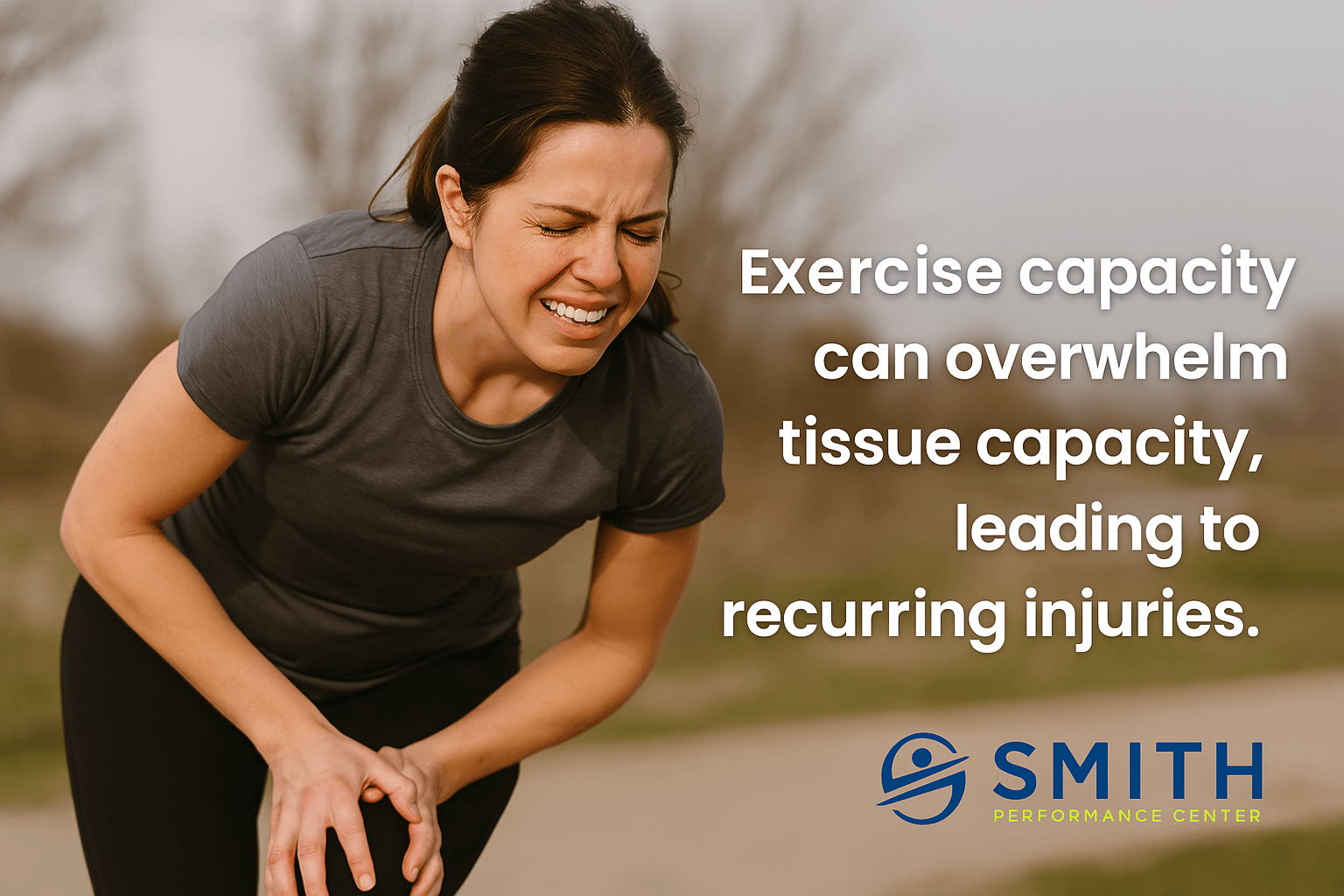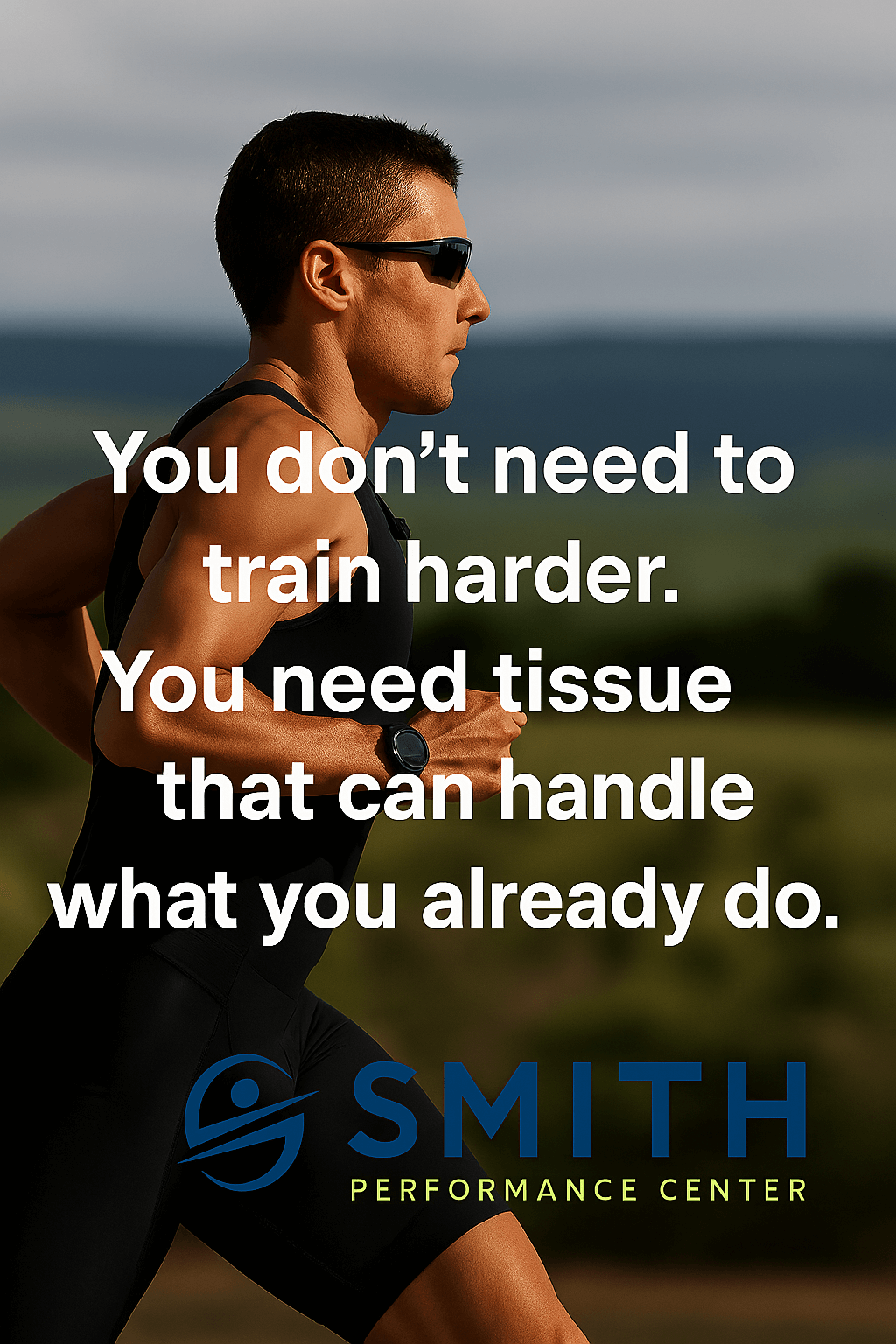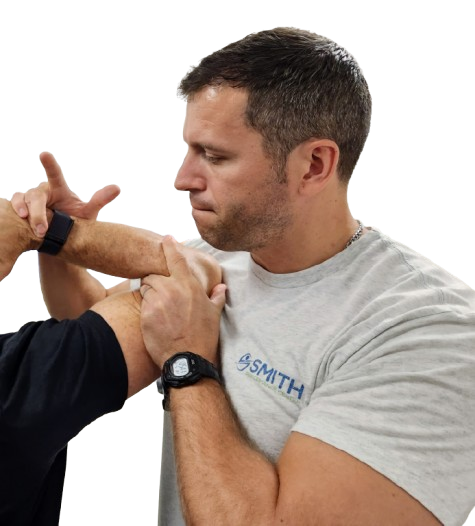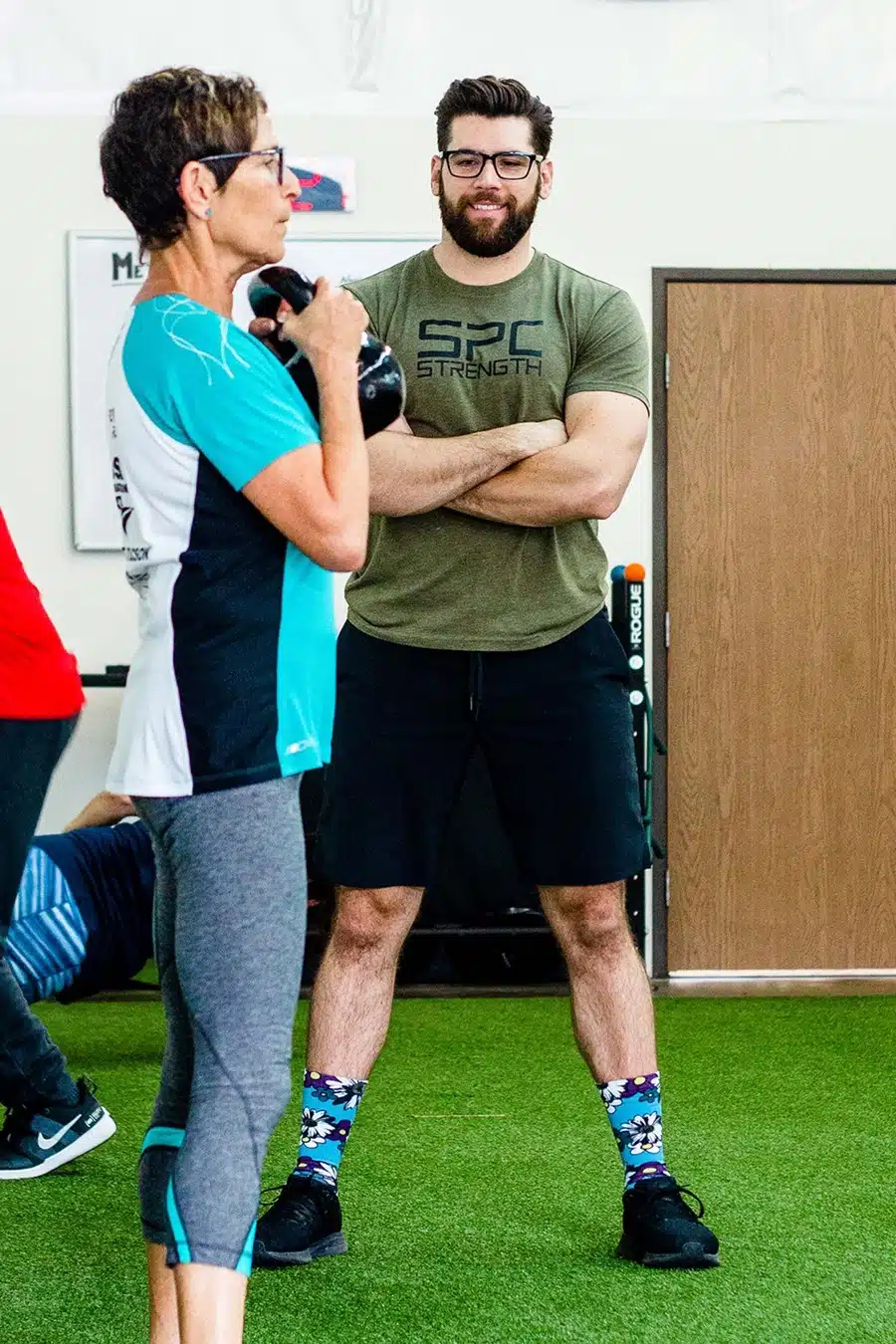Smith Performance Center Blog
Your Trusted Physical Therapy and Strength Training Blog for Injury Rehab and Pain Management
Welcome to the physical therapy blog from Smith Performance Center—your source for expert guidance on injury recovery, pain management, strength training, and sustainable health habits. Whether you’re managing chronic pain, recovering from surgery, or building long-term fitness, our team shares actionable strategies backed by clinical experience and real-world success. Stay up to date with new posts on rehab phases, movement progression, exercise programming, and the science behind making healthcare work for you.


How to Find the Real Cause of Pain: Our 4-Pillar Diagnosis Process
If you are trying to find the cause of pain that keeps returning, you are not alone. Many people are given quick labels like tendonitis or a pinched nerve and told to rest but that often does not solve the real issue. At Smith Performance Center, we go deeper than a label. We use a system called the 4 Pillars of Diagnosis to understand the real problem and build a clear path to recovery. Each pillar gives us critical information about what is causing your symptoms, how your body is functioning, what helps, and what triggers setbacks. It is the difference between a guess and a plan that works. 1. Structural Diagnosis: What Might Be Injured? This is the traditional starting point in most evaluations.

Understanding and Managing Flare-Ups During Rehabilitation
During recovery, there comes a pivotal moment when symptoms improve, and the client feels like they’ve turned a corner. Life feels good again, and naturally, activity levels increase. This change is often unconscious or unintentional—but its consequences can be significant. A rehabilitation flare-up is defined as a return or increase in the original symptoms that led the patient to seek care. The natural reaction to a flare-up is often to question whether the real problem is being addressed. Read: the diagnosis is wrong. But this reaction can lead to a critical misstep—focusing on the wrong issue and missing an opportunity for patient empowerment. Diagnostic Errors vs. Rehabilitation Flare-Up Mismanagement Achieving the correct diagnosis involves identifying potential tissue pain generators, noting local and regional contributors, considering

Tissue Capacity vs. Exercise Capacity: Why Most People Miss the Mark
You’re Doing the Work—So Why Does Your Body Keep Breaking Down? You show up. You put in the effort. Whether it’s running, lifting, group fitness, or weekend hikes, you’re trying to stay active. But despite the commitment, you keep dealing with recurring injury from exercise. Pain shows up, progress stalls, and your body feels more unpredictable than it should. This isn’t about motivation. It’s about biology.The real issue is a mismatch between what you can make yourself do and what your body is built to tolerate. At Smith Performance Center, we call that gap the difference between exercise capacity and tissue capacity the rehab standard—and it’s one of the most overlooked problems in rehab and training. What Is Exercise Capacity? Exercise capacity is your ability

Triathlon Injury Rehab: How SPC Phases Prevent Setbacks
Recurring injuries derailed Alex’s triathlon training for years—until he adopted a structured, phase-based rehab approach. This case study shows how the Smith Performance Center Phase System helped him move from chronic pain to consistent performance by focusing on what most athletes overlook: building tissue capacity to match training demands.

Meniscus Tears & Knee Pain: Why Rehab Needs More Than Just Cutting Out the Problem
The Evolution of Thought Around Meniscus Injuries Clinical practice is filled with successes and failures. For some reason, failures tend to linger in memory the longest and often drive the biggest changes in how we approach patient care. A significant moment in my clinical career involved a meniscus tear, knee pain, and the need for surgery. One of the most impactful shifts in my approach to knee pain, particularly in cases involving meniscus tears, came from a repeated clinical pattern: patients improving, then regressing, over and over. This frustrating cycle forced me to rethink my process and align it with a more structured framework—one that incorporates the Smith Performance Center Phases. This helped me answer the question, “Does a meniscus tear require surgery, or can

Breaking the Injury Doom Loop with Sean McConnell: Why the Right Support System Matters
Confidence is even more important than strength. People come in with doubt and fear of pain. If they don’t believe they can move safely, they won’t move at all. My job is to assess not just their movement, but also their psychological acceptance of movement. The best exercise is the one you can do, so we start small, monitor the response, and slowly build from there

How to Find the Real Cause of Pain: Our 4-Pillar Diagnosis Process
If you are trying to find the cause of pain that keeps returning, you are not alone. Many people are given quick labels like tendonitis or a pinched nerve and told to rest but that often does not solve the real issue. At Smith Performance Center, we go deeper than a label. We use a system called the 4 Pillars of Diagnosis to understand the real problem and build a clear path to recovery. Each pillar gives us critical information about what is causing your symptoms, how your body is functioning, what helps, and what triggers setbacks. It is the difference between a guess and a plan that works. 1. Structural Diagnosis: What Might Be Injured? This is the traditional starting point in most evaluations.

Understanding and Managing Flare-Ups During Rehabilitation
During recovery, there comes a pivotal moment when symptoms improve, and the client feels like they’ve turned a corner. Life feels good again, and naturally, activity levels increase. This change is often unconscious or unintentional—but its consequences can be significant. A rehabilitation flare-up is defined as a return or increase in the original symptoms that led the patient to seek care. The natural reaction to a flare-up is often to question whether the real problem is being addressed. Read: the diagnosis is wrong. But this reaction can lead to a critical misstep—focusing on the wrong issue and missing an opportunity for patient empowerment. Diagnostic Errors vs. Rehabilitation Flare-Up Mismanagement Achieving the correct diagnosis involves identifying potential tissue pain generators, noting local and regional contributors, considering

Tissue Capacity vs. Exercise Capacity: Why Most People Miss the Mark
You’re Doing the Work—So Why Does Your Body Keep Breaking Down? You show up. You put in the effort. Whether it’s running, lifting, group fitness, or weekend hikes, you’re trying to stay active. But despite the commitment, you keep dealing with recurring injury from exercise. Pain shows up, progress stalls, and your body feels more unpredictable than it should. This isn’t about motivation. It’s about biology.The real issue is a mismatch between what you can make yourself do and what your body is built to tolerate. At Smith Performance Center, we call that gap the difference between exercise capacity and tissue capacity the rehab standard—and it’s one of the most overlooked problems in rehab and training. What Is Exercise Capacity? Exercise capacity is your ability

Triathlon Injury Rehab: How SPC Phases Prevent Setbacks
Recurring injuries derailed Alex’s triathlon training for years—until he adopted a structured, phase-based rehab approach. This case study shows how the Smith Performance Center Phase System helped him move from chronic pain to consistent performance by focusing on what most athletes overlook: building tissue capacity to match training demands.

Meniscus Tears & Knee Pain: Why Rehab Needs More Than Just Cutting Out the Problem
The Evolution of Thought Around Meniscus Injuries Clinical practice is filled with successes and failures. For some reason, failures tend to linger in memory the longest and often drive the biggest changes in how we approach patient care. A significant moment in my clinical career involved a meniscus tear, knee pain, and the need for surgery. One of the most impactful shifts in my approach to knee pain, particularly in cases involving meniscus tears, came from a repeated clinical pattern: patients improving, then regressing, over and over. This frustrating cycle forced me to rethink my process and align it with a more structured framework—one that incorporates the Smith Performance Center Phases. This helped me answer the question, “Does a meniscus tear require surgery, or can

Breaking the Injury Doom Loop with Sean McConnell: Why the Right Support System Matters
Confidence is even more important than strength. People come in with doubt and fear of pain. If they don’t believe they can move safely, they won’t move at all. My job is to assess not just their movement, but also their psychological acceptance of movement. The best exercise is the one you can do, so we start small, monitor the response, and slowly build from there




